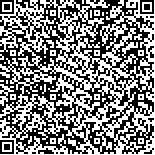| 摘要: |
| [摘要] 目的 探讨经皮氧分压和踝肱指数(ABI)在糖尿病足下肢动脉病变诊断中的意义。方法 选取2015-01~2016-06在该院内分泌科住院的496例2型糖尿病患者,男295例,女201例,平均年龄(59.84±11.66)岁,糖尿病病程为0.1~35年。分为无糖尿病周围神经病变和下肢动脉病变组(CO组,95例)、糖尿病周围神经病变而无下肢动脉病变组(DPN组,139例)、下肢动脉病变而无糖尿病周围神经病变组(LEAD组,83例)、糖尿病周围神经病变和下肢动脉病变组[(N+A)组,179例]。分析各组经皮氧分压与ABI的差异。结果 各组之间年龄、血压、BMI差异均无统计学意义(P>0.05)。DPN组与LEAD组的病程相比差异无统计学意义(P>0.05),其余两组之间病程比较差异均有统计学意义(P<0.01)。CO组与DPN组、LEAD组与N+A组糖化血红蛋白相比差异无统计学意义(P>0.05),其余两组之间比较差异均有统计学意义(P<0.01)。CO组与DPN组相比,经皮氧分压、ABI差异无统计学意义(P>0.05),其余两组之间经皮氧分压、ABI比较差异均有统计学意义(P<0.05)。ROC曲线分析提示TcPO2诊断下肢动脉病变优于ABI。结论 TcPO2能很好地反映糖尿病患者的下肢微循环状态,其诊断下肢动脉病变优于ABI。 |
| 关键词: 经皮氧分压 糖尿病 下肢动脉病变 微循环 |
| DOI:10.3969/j.issn.1674-3806.2017.08.09 |
| 分类号:R 587.1 |
| 基金项目: |
|
| Significance of transcutaneous oxygen pressure and ankle brachial index in the diagnosis of lower extremity atherosclerotic disease in diabetic foot |
|
XU Guo-ling, YAN Xiao-dong, YU Yan-qing
|
|
Significance of transcutaneous oxygen pressure and ankle brachial index in the diagnosis of lower extremity atherosclerotic disease in diabetic foot
|
| Abstract: |
| [Abstract] Objective To investigate the significance of transcutaneous oxygen pressure(TcPO2) in the diagnosis of lower extremity atherosclerotic disease in diabetic foot by comparison with ankle brachial index(ABI).Methods 496 inpatients with type 2 diabetes were collected in our department during January 2015 and June 2016, including 295 males and 201 females, with an average age of (59.84±11.66)years, and a duration of diabetes being 0.1 to 35 years. According to the different diagnoses, the patients were divided into CO group(with no diabetic peripheral neuropathy and no lower extremity atherosclerotic disease, n=95), DPN group(with diabetic peripheral neuropathy but no lower extremity atherosclerotic disease, n=139), LEAD group(with lower extremity atherosclerotic disease but no diabetic peripheral neuropathy, n=83) and N+A group(with diabetic peripheral neuropathy and lower extremity atherosclerotic disease, n=179). The levels of ABI and TcPO2 were compared among the groups.Results There were no significant differences in age, blood pressure and body mass index(BMI) among the groups(P>0.05). There was no significant difference in the duration of diabetes between DPN group and LEAD group(P>0.05), but there was a significant difference between the other two groups(P<0.01). There was no significant difference in the level of HbA1c(P>0.05) between CO group and DPN group, or between LEAD group and N+A group, but there was significantly different between the other two groups(P<0.01). There were significant differences in the levels of TcPO2 and ABI between the two groups(P<0.05), except for the comparison between CO group and DPN group(P>0.05). ROC curve analysis showed that TcPO2 was better than ABI to diagnose the diabetic lower extremity atherosclerotic disease.Conclusion TcPO2 can truly reflect the microcirculation of lower limbs of the patients with diabetes, and therefore is better than ABI to diagnose lower extremity atherosclerotic disease. |
| Key words: Transcutaneous oxygen pressure Diabetes mellitus Lower extremity atherosclerotic disease Microcirculation |

